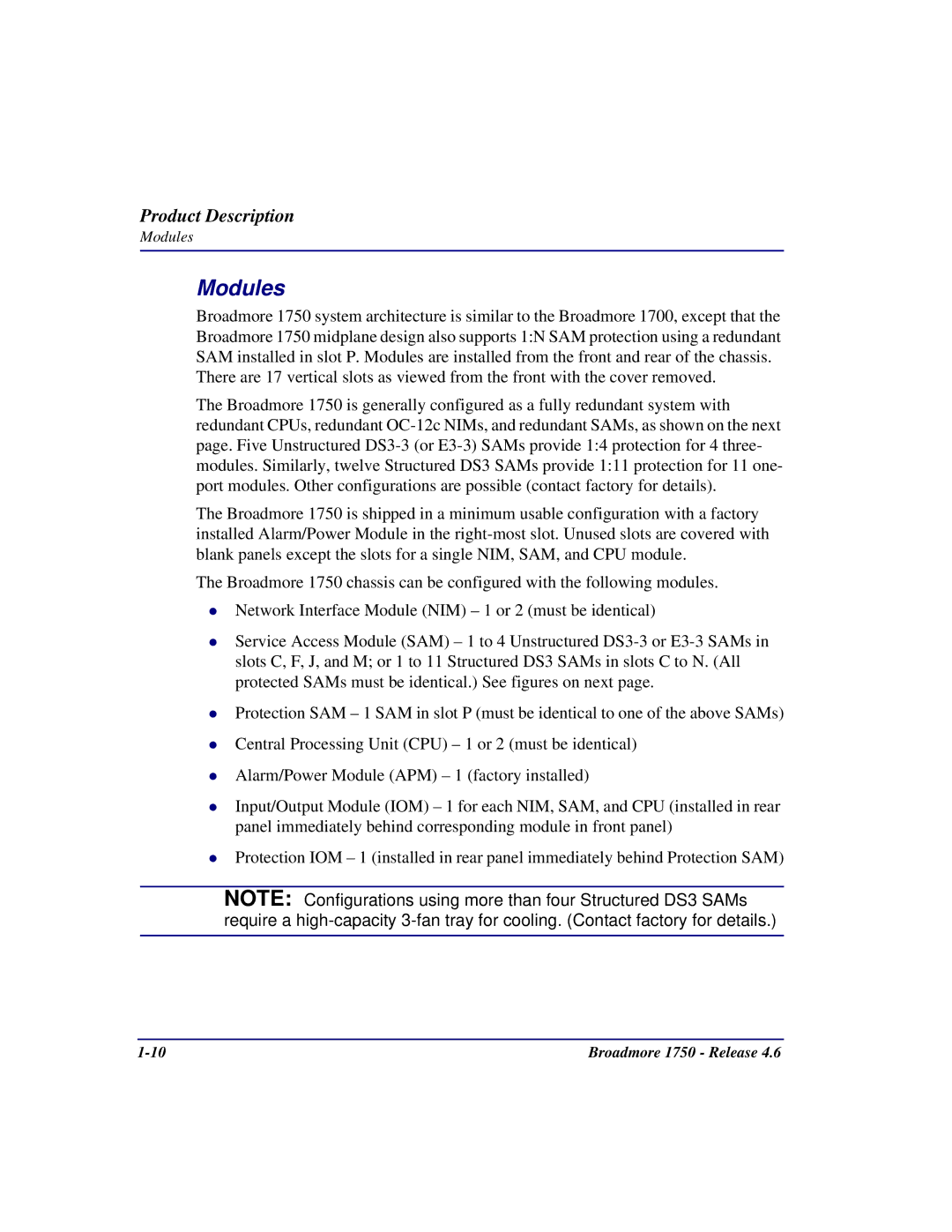
Product Description
Modules
Modules
Broadmore 1750 system architecture is similar to the Broadmore 1700, except that the Broadmore 1750 midplane design also supports 1:N SAM protection using a redundant SAM installed in slot P. Modules are installed from the front and rear of the chassis.
There are 17 vertical slots as viewed from the front with the cover removed.
The Broadmore 1750 is generally configured as a fully redundant system with redundant CPUs, redundant
The Broadmore 1750 is shipped in a minimum usable configuration with a factory installed Alarm/Power Module in the
The Broadmore 1750 chassis can be configured with the following modules. Network Interface Module (NIM) – 1 or 2 (must be identical)
Service Access Module (SAM) – 1 to 4 Unstructured
Protection SAM – 1 SAM in slot P (must be identical to one of the above SAMs)
Central Processing Unit (CPU) – 1 or 2 (must be identical)
Alarm/Power Module (APM) – 1 (factory installed)
Input/Output Module (IOM) – 1 for each NIM, SAM, and CPU (installed in rear panel immediately behind corresponding module in front panel)
Protection IOM – 1 (installed in rear panel immediately behind Protection SAM)
NOTE: Configurations using more than four Structured DS3 SAMs require a
Broadmore 1750 - Release 4.6 |
